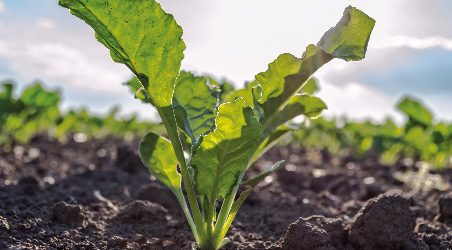Safe Storage of Liquid Fertiliser

Liquid Fertiliser in storage
At OMEX we’re committed to safe storage of liquid fertiliser. This guide highlights how you can achieve safe on-farm storage. Our team of tank inspectors are here to support you on your liquid fertiliser storage journey, to ensure you’re utilising safe and efficient storage.
You can also refer to the AIC Fluid Fertiliser Guidance.
How should your bunded fertiliser tank look? Here’s an example:

Safe Storage of Liquid Fertiliser: Guidance
Using liquid fertiliser storage tanks
Liquid Fertiliser storage tanks enables the farmer to store their Nitroflo and Multiflo fertiliser efficiently The reduced waste from packaging, and compact storage systems, frees up space on the farm. In order to safely use liquid fertiliser storage tanks farmers must ensure:
- All liquid fertiliser storage tanks, pipework and valves must be fit for purpose, i.e. resistant to corrosion
- All liquid fertiliser storage tank fittings are tamperproof. Lock all valves shut when not in use
- Delivery companies must be made aware of site-specific emergency procedures
- Check liquid fertiliser storage tank, pipework and valves are in good condition before transferring product
- Ensure liquid fertiliser storage tank has sufficient capacity before delivery
- Avoid overfilling
- Multiple liquid fertiliser storage tanks should be numbered to avoid delivery confusion

Maintaining liquid fertiliser storage tanks
Maintaining liquid fertiliser storage tanks is key to promoting safe storage of liquid fertiliser on your farm. When maintaining liquid fertiliser storage tanks farmers must ensure:
- Liquid fertiliser storage tank, pipework and valves must be inspected internally and externally, for damage and corrosion at least annually by a suitably qualified technician
- Carry out any necessary remedial work immediately
- Undertake additional checks at the start of the season and when deliveries are made to and from the tank. If in doubt do not use the tank or bowser
- Drain down and flush through all pipework at the end of each season
- Keep a record of inspections and maintenance
- Contact OMEX to arrange a further inspection should you have any concerns

Information about permanent liquid fertiliser storage tanks:
OMEX offer permanent liquid fertiliser storage tanks. These high quality storage tanks are offered to safely store liquid fertiliser on the farm. OMEX also employ a team of liquid fertiliser storage tank inspectors, to work with farmers to ensure tanks are safely maintained and stored.
- OMEX will conduct and provide an environmental risk assessment
- Additional advice is also available from the Environment Agency
- OMEX policy states that all liquid fertiliser tanks installed from June 2019 must be bunded to prevent possible contamination of ground, ground water or surface water. In the event of tank failure OMEX actively advocates bunding of storage tanks to all users

OMEX Liquid Fertiliser Storage Tank Installation Requirements
When installing a liquid fertiliser storage tank there are requirements that farmers must meet:
- Minimum effective bund capacity to be 110% of the capacity of the largest tank or 25% of the total installed capacity, whichever is largest
- Maximum bund wall height 1.2m
- Impervious construction (Continuously poured concrete)
- No pipes passing through bund wall or floor
- All pipework to terminate within the bund
- Bund floor to incorporate integral pump out sump
- The “Tank Installation Guide” provided in the downloads tab gives indicative bund sizes for various throughput and GRP tanks size combinations
- Bunds should be designed and constructed: –
- In accordance with the CIRIA guidance “Containment Systems for the prevention of pollution” specifically Eurocode 2 Part 3 (BS EN 1992-3:2006)
- To provide “Class 1” containment as a minimum
- Assuming a fluid specific gravity (SG) of 1.3 (i.e. density of 1,300 kg/m3)
- The following are supplied with each storage tank and must remain attached (via chain etc.) to each fill/discharge line: –
- Lockable valve
- Valve Cap
- Lockable steel cover
- Suitable padlock(s) and key(s)
- Tank Location – Bunds should be sited in accordance with AIC “Code of practice for the prevention of water pollution from the storage and handling of fluid fertilisers, Part 3 – USERS – Section 3.4 or relevant OMEX site specific guidance
- All OMEX liquid fertiliser storage tanks will only be installed once a full tank site inspection has been completed by the OMEX tank inspector
Information on Bowsers and Mobile Liquid Fertiliser Storage Tanks
- Temporary storage can pose a significant hazard to watercourses. Thus suitable siting is crucial before filling or dispensing. Transport around the farm needs careful consideration. Roadways and tracks must be able to withstand fully laden bowsers passing over or being parked on them
- Ensure bowsers and all fittings are fit for purpose and protected from corrosion
- Ensure bowsers are set down on level, solid ground before delivery is made
- Provide sufficient support beneath parking legs to carry loaded weight without it sinking into the ground or becoming unstable
- Ensure all hatches and manholes form a watertight seal when closed
- Do not move laden bowser unless all hatches, lids and valves are closed and locked
- Open hatches slightly, when emptying bowsers, to avoid a vacuum which could cause the tank to crumple and collapse
- Keep a record of all inspections and maintenance
